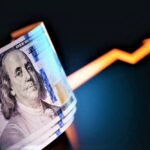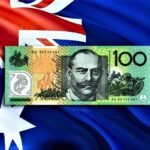The pound is under tremendous strain as increased interest rates exacerbate recession fears.
The Pound Sterling (GBP) fell after failing to test the important resistance level of 1.2800. As the Bank of England (BoE) raised interest rates, heightening recession fears. The GBPUSD(Pound) pair falls dramatically as increased interest rates threaten the UK’s economic future. The UK’s strong labor market is losing its tenacity as businesses slow down their recruiting in the face of grim economic prospects.
The Bank of England’s aggressive rate-tightening cycle has begun to damage the United Kingdom’s property industry. And strong labor market, but is laying the groundwork for restoring inflation to 2%. Andrew Bailey is optimistic that inflation will fall to 5% by October because the Fed will keep interest rates. “Sufficiently restrictive for a sufficient period.”
GBPUSD falls amid cautious market sentiment.
Pound Sterling falls quickly after failing to test the round-level resistance of 1.2800. As the Bank of England raises interest rates, reducing economic prospects.
The economic outlook for the United Kingdom is being scrutinized. As Bank of England policymakers keep the door open for future policy tightening.
The Bank of England boosted interest rates by 25 basis points (bps) to 5.25% last week. This was the 14th straight interest rate increase in the current tightening cycle. And interest rates are at their highest level since the 1970s. past 15 years.
Last Monday, Bank of England Governor Andrew Bailey stated that the central bank will retain interest rates “sufficiently restrictive for a sufficient period” in order for inflation to return to 2% quickly.
Andrew Bailey appears sure that inflation would fall to 5% in October, implying that UK Prime Minister Rishi Sunak will keep his goal to cut inflation in half this year. Sunak made the commitment when inflation was in the double digits.
According to BoE Pill, greater unemployment and fewer vacancies will eventually lead to weaker wage growth.
Following the decision of monetary policy, Bank of England senior economist Huw Pill stated on Friday that successive interest rate hikes are cooling the labor market and lowering inflationary pressures. He went on to say that increased unemployment and fewer job openings will eventually lead to reduced wage growth.
The central bank is ramping up its tightening cycle. The labor market and the housing sector are under stress.
According to a poll conducted by the Recruitment & Employment Confederation (REC) and KPMG, UK employers delayed permanent worker hiring by the most since mid-2020 due to growing fears about the economy, according to Reuters.
Despite the dip in permanent postings, REC Chief Executive Neil Carberry stated the job market remained “fairly robust.”
Meanwhile, the housing sector remains fragile as first-time house buyers delay their purchases in order to avoid rising interest commitments.
The prognosis for the United Kingdom is dismal, as tight policy dampens economic prospects.
The market is cautious as investors anticipate the release of July inflation data in the United States on Thursday.Pound Sterling falls quickly after failing to test the round-level resistance of 1.2800.
The US Dollar Index (DXY) rises above 102.00 as Federal Reserve (Fed) policymakers continue to believe that additional interest rate hikes will bring inflation back to target 2%.
Fed Governor Michelle Bowman stated over the weekend that the US central bank will continue to boost interest rates in order to reduce inflation. She also stated that she favored additional policy tightening in July, despite strong consumer expenditure, a tight job market, and persistently high inflation.
Raphael Bostic, President of the Atlanta Fed Bank, stated that the central bank will most certainly stay restrictive in 2024. Concerning the labor market, the Fed policymaker stated that July employment was in line with forecasts, and he is not surprised that wage growth remains robust.
The US Nonfarm Payrolls (NFP) data released last week revealed that the labor market grew by 187K, which was lower than predictions of 200K but somewhat better than June’s reading of 185K. The unemployment rate fell to 3.5%. 3.6% was predicted and previously released.
The monthly labor cost index held steady at 0.4% in June, while investors expected the economic data to fall to 0.3%. The annualized labor cost index stayed constant at 4.4%, compared to predictions of 4.2%.









